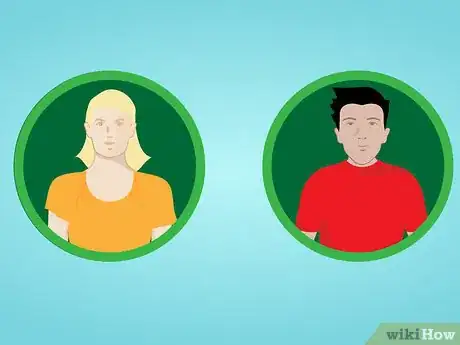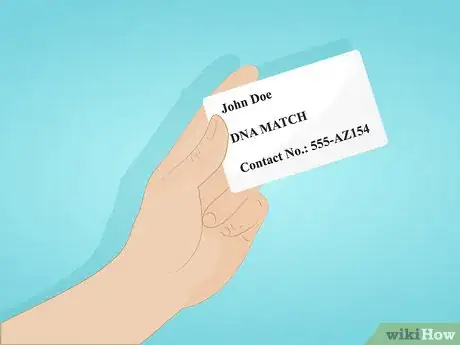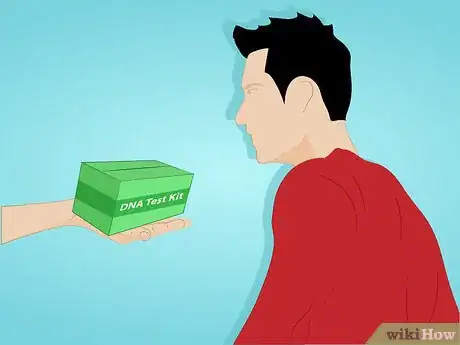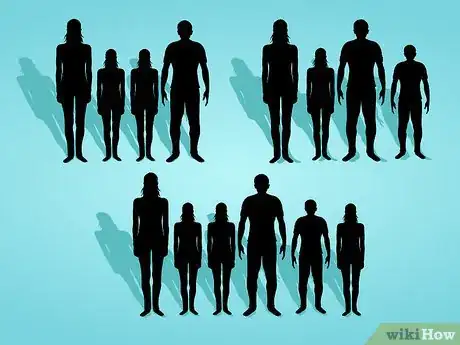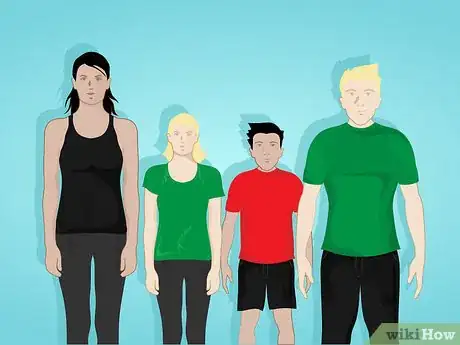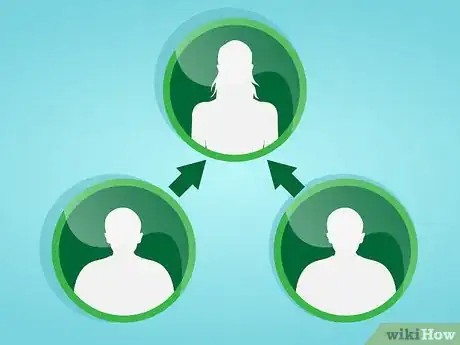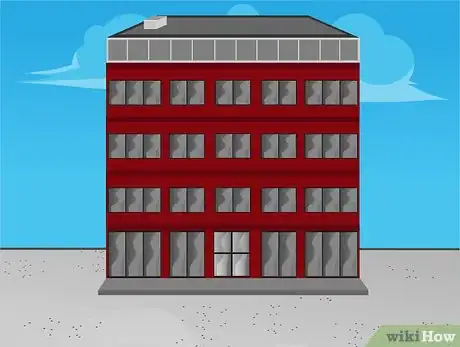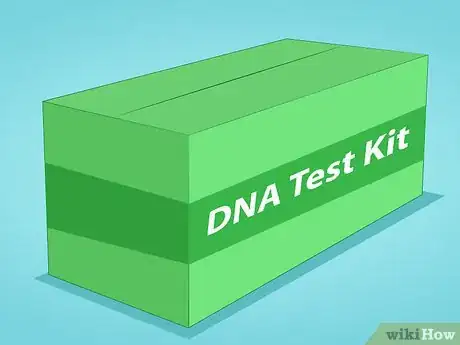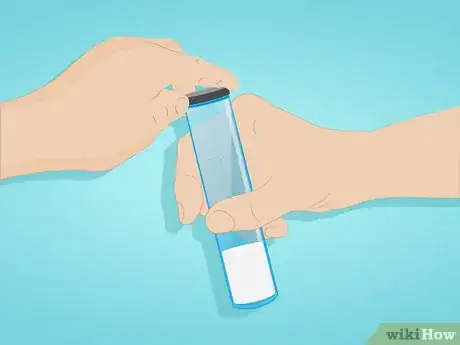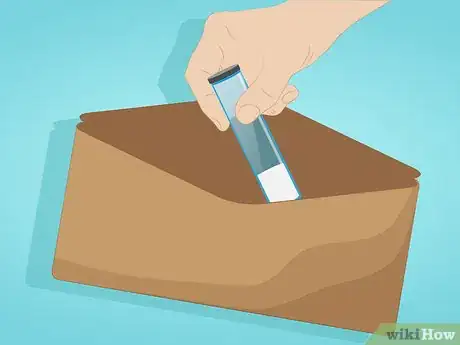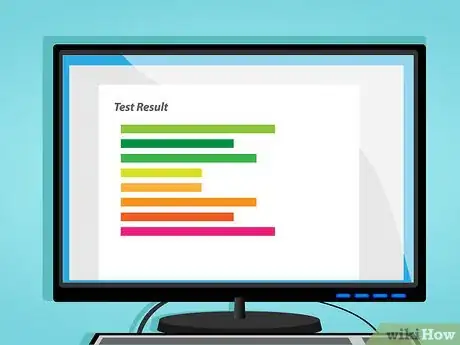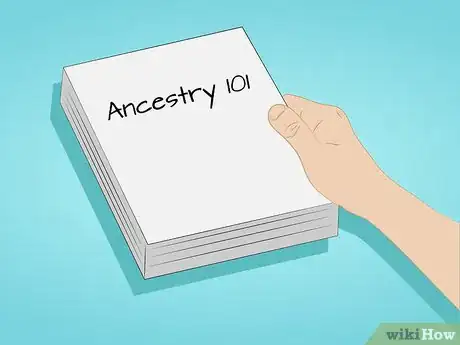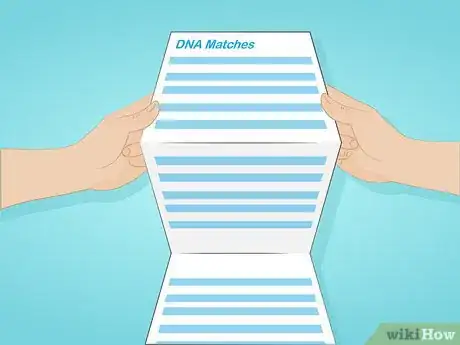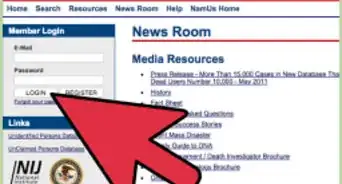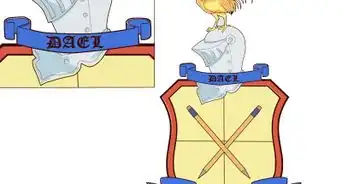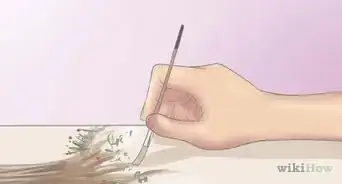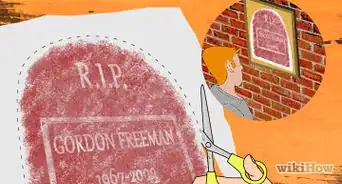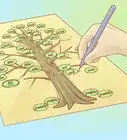X
wikiHow is a “wiki,” similar to Wikipedia, which means that many of our articles are co-written by multiple authors. To create this article, 12 people, some anonymous, worked to edit and improve it over time.
This article has been viewed 59,975 times.
Learn more...
New DNA tests are coming out all of the time, and they can be very helpful in building out your family tree. It can be a little bit confusing with all the tests, but not to worry. These steps are easy to follow.
Steps
Part 1
Part 1 of 4:
Knowing What You Want
-
1Know what a DNA test can do for your family tree search. DNA Tests are best in finding the cousins you don't know you have.
- The jackpot is finding say, a 3rd cousin you didn't know about, who has lots of information on ancestors you didn't already know about.
- Many of these people have taken a DNA test already and are registered with the DNA companies. So, the DNA test will not only tell you who are your distant cousins, but also let you contact them.
-
2Know that it DNA tests work best when you are from:
- Large families with many many cousins
- Ethnicities with lots of data and researchers
- Ethnically mixed families, so you can easily figure out what side of your family is related to someone you find.
Advertisement -
3
Advertisement
Part 2
Part 2 of 4:
Deciding Which Test to Order
-
1Start with one of the Family Finder tests. These tests (also called autosomal tests) give results for all of your DNA, not just the male line or the female line. They are therefore better for tracing more recent ancestors.
- The family finder tests will find people you are related to, but don't know, typically 3rd or 4th cousins. These people are most likely to have family information you do not have.
- There is another kind of test that you usually don't want for family tree research. Y Chromosome tests and X Chromosome tests are helpful in testing what National Geographic calls your "Deep Ancestry[1]," where your family was from many hundreds or thousands of years ago. This is very interesting but not as helpful as finding distant cousins.
- The Y Chromosome tests are helpful when you are trying to prove a shared male ancestor. For example, they can help if you are trying to prove the father of a direct-line ancestor on the extreme paternal line (following the surname). If known male descendants of the “supposed” father match the your DNA (if you are male) or your father's DNA (if you are female), then it proves you have a common ancestor.
- Similarly, 23andme now lets you find out your percentage of Neanderthal DNA. This is also highly interesting, but again not going to help you trace your family tree over the last couple hundred years or more.
-
2Know that you want to order Your DNA test from one of the big three. Smaller companies may or may not have better technology, but to trace your family tree, you need to order from one of the larger companies.
- The larger companies will match your DNA with people related to you that have also taken the test from them. Smaller companies are much less likely to find a match, simply because they have less people in their database.
-
3Decide which company to order the DNA test from. Family Finder tests are available from all three of the large companies:
- Ancestry.com
- 23 and me
- FamilyTreeDNA
-
4You will be OK with either of the three companies. Your decision on which of the three to use is a bit more personal preference. 23andme has some interesting features (notably, disease identification), but these other features are not helpful for most family tree purposes.
- African Ancestry and Oxford Ancestors are very good services for those tracing their more distant roots in Africa and the UK, but are not as good for family finding.
- You may find a certain company has a better service for your ethnicity. 23andme has a project to better classify DNA of people from Sub Saharan Africa. So if you are trying to trace African DNA, they might be the best match for you.
- Consider looking at more than one company. If you are extremely determined, you could take tests from more than one of these companies.
- 23andme data can be imported into Family Tree DNA. You will have to pay $50 to do that.
Advertisement
Part 3
Part 3 of 4:
Ordering and Taking the Test
Part 4
Part 4 of 4:
Using the Results to Build Out Your Family Tree
-
1Understand more about your DNA. Before looking at your results, you may want to read up on the DNA of the location of your ancestors for more background.
- For example, if you are looking at ancestors from the British Isles, you could read Saxons, Vikings and Celts.[2] There are similar titles for other ethnicities.
-
2Scan the DNA company's database for matches. You will probably find an overwhelming number of matches, but the key is to contact the right people to help build out your family tree.
- It is best to organize before talking to distant relatives that you will find online. Get the family names and locations of your ancestors that you are trying to trace.
- Ancestry will often send you a list of hundreds of your 4th-6th cousins, this is not very helpful to look at unfiltered. They will show a family name of a DNA match, which does make things easier to trace.
-
3Realize that mixed ethnic background makes finding relatives easier.
- As an example, if you are half white and half Asian, and you find someone is a cousin who is Asian, you immediately can guess which side they are on.
- If you are 1/8th or 1/16th of an ethnicity, but do not know what side of your family that ethnicity is, you can find out by having either your mother or father take the same DNA test.
-
4Look closely at the lists of people the DNA company provides to you. The most promising results are 3rd or 4th cousins, especially if you can find a family name in common.
- You are looking for "Goldilocks" relatives, not too close and not too far. You will learn most if you can find a relative that is closely related enough so that you can trace your exact relationship and merge your family trees.
Advertisement
Community Q&A
-
QuestionHow do I find out exactly how I'm related to a DNA match?
 Community AnswerYou often can't, but you can come close. Look for common names between matches and then find a common ancestor between them. That really only proves that your two matches are related and only if they are correct in developing their tree, but as you develop more matches who share common ancestors, you gain certainty that you also probably have that common ancestor. The best thing you can do is build your own tree. This may mean travel or reaching out to local historians.
Community AnswerYou often can't, but you can come close. Look for common names between matches and then find a common ancestor between them. That really only proves that your two matches are related and only if they are correct in developing their tree, but as you develop more matches who share common ancestors, you gain certainty that you also probably have that common ancestor. The best thing you can do is build your own tree. This may mean travel or reaching out to local historians. -
QuestionHow can another person have the exact DNA with maternal and paternal sides?
 Community AnswerIf your mother's sibling married your father's sibling, the offspring would have very similar DNA.
Community AnswerIf your mother's sibling married your father's sibling, the offspring would have very similar DNA. -
QuestionWhat information is available to me after I get a DNA test?
 Community AnswerYou will be able to see all of the people who have preceded you in testing who are connected to you by enough DNA for them to consider you a cousin. The younger you are, the more relatives you will have. Always check back because the number testing is growing by leaps and bounds. You can learn the most by building your own family tree. Try to make sure you are putting in accurate family information.
Community AnswerYou will be able to see all of the people who have preceded you in testing who are connected to you by enough DNA for them to consider you a cousin. The younger you are, the more relatives you will have. Always check back because the number testing is growing by leaps and bounds. You can learn the most by building your own family tree. Try to make sure you are putting in accurate family information.
Advertisement
References
- dna.ancestry.com
- 23andme.com
- FTDNA.com
About This Article
Advertisement
